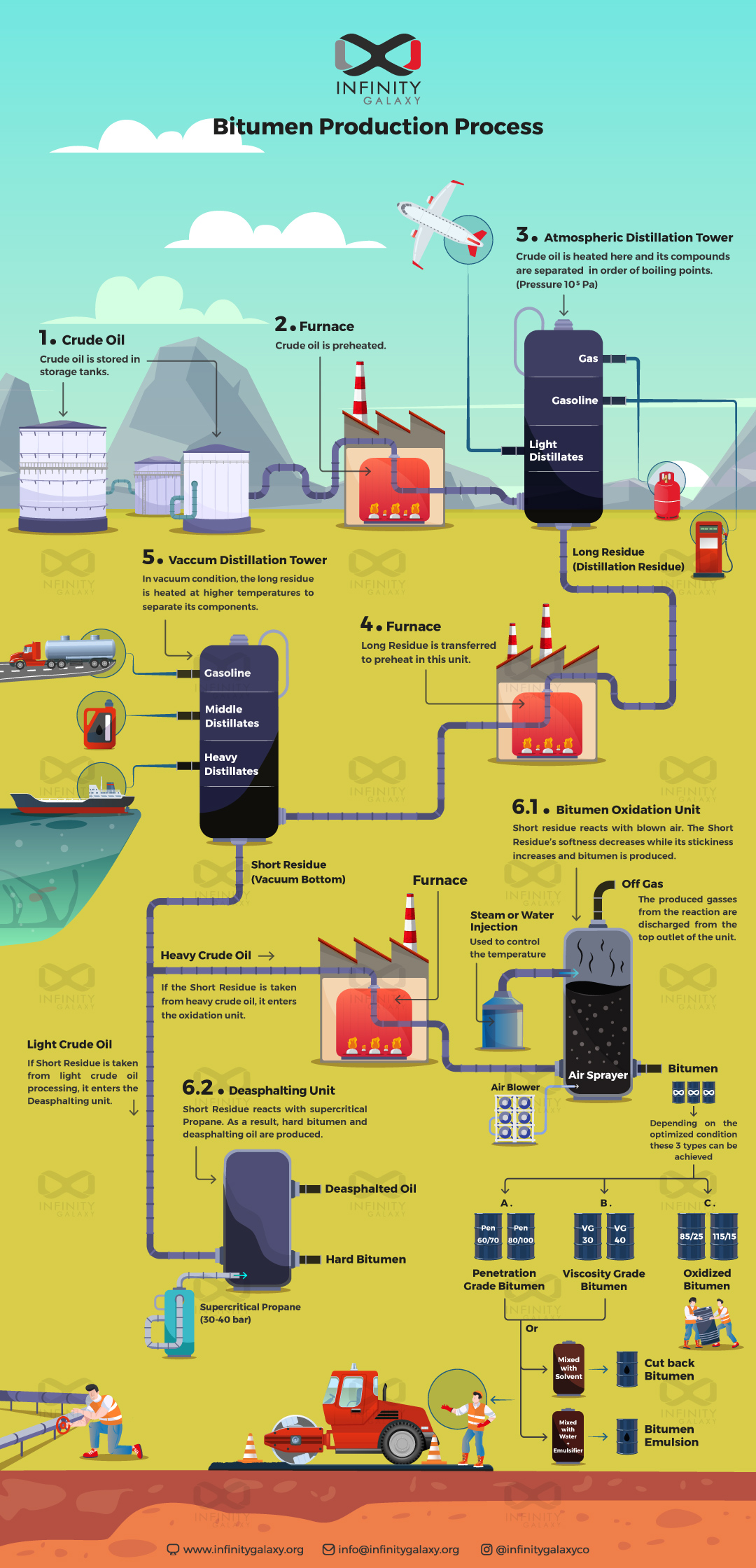Bitumen Binder Produced & Manufacturing Process
How is the Bitumen Binder Produced?
It is obvious that the aggregates cannot bond to each other to make the asphalt without bitumen. This vital material in road construction has a complicated process of manufacturing.
Generally, there are different ways to manufacture bitumen. 4 types of methods are
- Air blowing
- Straight Run
- Deasphalting
- Blending.
Blending and Deasphalting are unconventional methods. The vast majority of the refineries prefer to produce bitumen by air blowing method.
In this post, we want to explain about the air-blowing way of bitumen production.
The Air Blowing Method
To produce bitumen, like any other material it is necessary to have a feedstock.
The feedstock or raw material of bitumen is the vacuum bottom.
Vacuum Bottom; the Raw Material of Bitumen
When the crude oil is transferred from the oil reservoirs through the pipeline to the oil refinery, it enters the desalter. In the desalter, its salts will be removed and the salt-free crude oil remains.
Then it goes to the furnace and preheats there. After heating, it enters the first distillation tower of the refinery which is the Atmospheric Distillation Tower.
Atmospheric Distillation Tower
In this tower, there exist different trays. When the heated crude oil enters this tower, its components distillate due to their boiling point.
The lighter components of oil separate in the higher trays. The output of the atmospheric tower is long residue. This remaining material of the atmospheric tower should go to the furnace and preheat again. After the heating, it enters another distillation tower which is Vacuum Distillation Tower.
Vacuum Distillation Tower
The input of the vacuum distillation tower is the long residue which is obtained from the atmospheric distillation tower. The components of the long residue separate at higher temperatures.
The remaining material of this tower is short residue or vacuum bottom.
If the crude oil which the short residue is produced from is heavy oil, the short residue goes to the oxidation unit. Otherwise, it will be the deasphalting unit input.
Oxidation Unit
When the short residue enters the oxidation unit, the hot air blows into the bitumen. Here the air and vacuum bottom reacts to each other. This causes the bond between Hydrogen and Carbon atoms to be separated and cyclic molecules to be generated.
Pure bitumen which can be used in hot mix asphalt is obtained from this unit. It can be one of the below bitumen:
- Penetration Grade Bitumen
- Viscosity Grade Bitumen
- Oxidized Bitumen
This bitumen can be used in flexible pavement.
Deasphalting Unit
As we mentioned above, if the short residue is obtained from the light crude oil, it enters the deasphalting unit. In this unit, the short residue reacts with the supercritical propane. The output of this unit is the deasphalted oil and hard bitumen.
In the infographic below, Infinity Galaxy has explained each step of the Bitumen Production Process that can help you understand it better:
This Image will help you to understand the whole process of Bitumen Binder.

Bitumen Production Process
 |
 |
 |
 |
 |
 |
 |
 |
 |
 |
 |
 |



